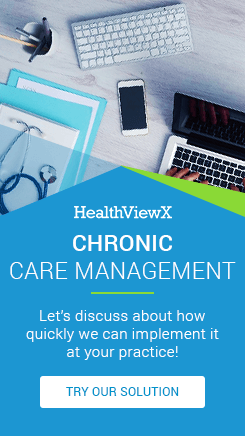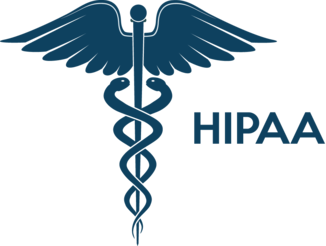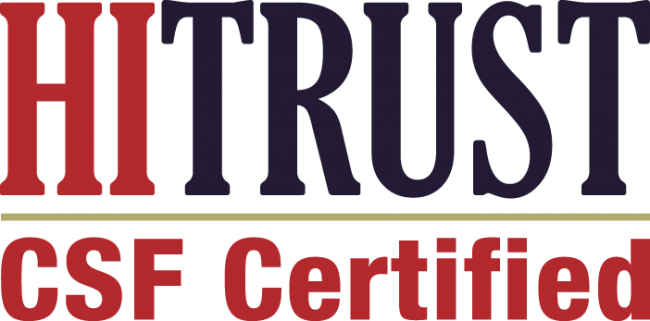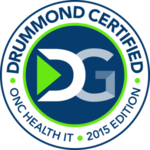The Patient Engagement Crisis: A $236 Billion Problem
Despite massive investments in healthcare technology and a growing awareness of its importance, patient engagement continues to fail at alarming rates. The consequences are staggering: low health literacy alone costs the United States economy approximately $236 billion annually, while poor health habits and underutilization of preventive services are identified by 49% and 47% of insurers respectively as top drivers of rising healthcare costs.
The irony is palpable. We live in an era where technology connects billions of people globally, yet healthcare providers struggle to meaningfully engage the patients right in front of them. According to a 2024 report, 17% of adults delayed or did not access medical care for any reason, despite the widespread availability of health insurance coverage.
The patient engagement solutions market tells a story of both promise and persistent challenges. The global patient engagement solutions market was estimated at $27.63 billion in 2024 and is projected to reach $86.67 billion by 2030, growing at a CAGR of 20.97%. Yet despite this explosive growth and investment, fundamental problems remain unresolved.
The Five Critical Failures of Traditional Patient Engagement
1. Fragmented Communication Creates Information Black Holes
One of the most pervasive failures in patient engagement is the fragmentation of communication channels. Patients receive appointment reminders via one system, lab results through another portal, billing statements by mail, and prescription updates through yet another platform. This disjointed approach creates confusion and disengagement.
A survey revealed that 66% of consumers prefer a provider who communicates in a timely and consistent manner, and 60% say it’s critical for providers to understand the patient beyond basic patient data. However, when communication is scattered across multiple non-integrated systems, achieving this consistency becomes nearly impossible.
The impact extends beyond inconvenience. Inaccurate or incomplete information can lead to ineffective communication between healthcare providers and patients, impacting treatment decisions and compromising patient safety.
2. The Health Literacy Barrier Remains Insurmountable
Health literacy – the ability to obtain, process, and understand basic health information, represents one of the most significant barriers to patient engagement. Nearly 9 out of 10 adults in the United States struggle with health literacy, yet most healthcare systems continue to communicate using complex medical jargon and assume a baseline level of health knowledge.
Patients with low health literacy may struggle to comprehend complex medical jargon, follow treatment plans, or navigate the healthcare system effectively, leading to misunderstandings, non-adherence to treatment, and ultimately poorer health outcomes.
The populations most at risk, elderly patients, non-native English speakers, those with limited education, and individuals with chronic conditions, are precisely those who need the most engagement but receive the least effective communication.
3. Time Constraints Crush Meaningful Engagement
Healthcare providers see upwards of 20 patients per day and spend about 17-24 minutes with each patient, totaling approximately 8 hours per day on patient visits alone. When you factor in patient charts, staff meetings, and administrative tasks, the time available for meaningful patient engagement evaporates.
This time crunch creates a vicious cycle. When providers are too busy to implement patient engagement practices and technology, they increase each patient’s likelihood of encountering low medication adherence, rising healthcare costs, and poor health outcomes.
The problem isn’t just quantity of time but quality of interaction. While many doctors rely on concise, transactional communication, most patients value empathy, active listening, and nonverbal cues. The mismatch between patient expectations and provider capacity creates a fundamental disconnect.
4. Cultural and Technological Barriers Create Inequity
In today’s diverse society, healthcare organizations serve patients from various cultural backgrounds who may have different beliefs, values, and communication preferences, creating obstacles to effective patient-provider communication and engagement.
Language barriers, digital literacy gaps, and socioeconomic factors compound these challenges. While 99% of hospitals had adopted capabilities enabling patients to electronically view their health information in 2024, having technology available doesn’t mean patients can effectively use it or access it.
5. Chronic Disease Management Falls Through the Cracks
Chronic conditions require continuous engagement, yet this is where traditional systems fail most dramatically. 68 million Americans have high blood pressure, and 20% of those people are unaware of their condition. Left unmanaged, these conditions lead to heart attacks, strokes, and preventable hospitalizations.
Disengaged patients tend to rely on emergency rooms for non-urgent care, either because they lack a primary care provider or are unsure where to seek appropriate care. This overreliance on emergency departments strains resources, creates backlogs, and reduces overall efficiency.
How HealthViewX Solves the Patient Engagement Crisis
HealthViewX doesn’t just address symptoms of poor patient engagement, it fundamentally reimagines how healthcare organizations connect with, communicate with, and care for patients throughout their entire healthcare journey.
1. Unified Communication Platform: One System, Every Touchpoint
HealthViewX’s smart integrated Patient Engagement Platform eliminates the fragmentation that plagues traditional systems. The platform empowers providers to deliver bi-directional conversational messaging at every digital touchpoint of the patient journey.
Key Features:
- Multi-Channel Communication: Two-way communication through secured SMS, automated calls (IVR), instant messaging, or email, allowing patients to communicate in their preferred mode and language
- Automated Workflows: Personalized workflows that require patient input with custom communication based on care needs, instantly documenting responses in the EHR
- HIPAA-Compliant Messaging: The platform enables providers to effortlessly engage patients on appointment reminders, alert notifications, feedback surveys, practice newsletters, educational content, perioperative instructions, and information about special events like screenings and vaccination drives
The Impact: Instead of patients receiving disconnected messages from multiple systems, they experience seamless, personalized communication that meets them where they are whether that’s via text message, phone call, or patient portal.
2. Breaking Down the Health Literacy Barrier
HealthViewX tackles health literacy challenges through intelligent content delivery and patient education tools.
The platform allows physicians to pre-select content for specific patients or conditions, making it available over the patient’s preferred channel. This means complex medical information is translated into understandable, actionable guidance tailored to each patient’s health literacy level and condition.
Educational Engagement Features:
- Condition-specific educational materials delivered automatically
- Visual aids and multimedia content for better comprehension
- Plain-language explanations that replace medical jargon
- Interactive content that confirms patient understanding
Patients can access educational materials on managing their conditions and preventing complications, leading to better outcomes with improved control, fewer hospitalizations, and higher patient satisfaction.
3. Time-Saving Automation That Enhances, Not Replaces, Human Connection
HealthViewX recognizes that providers can’t do more with the same amount of time—they need tools that amplify their impact without adding to their workload.
Efficiency Solutions:
- Automated Screening and Documentation: Standardized mental health screening tools can be deployed systematically across primary care settings, ensuring no patient is overlooked, while templates and automated documentation features reduce provider workload
- Care Manager Dashboards: Care managers can efficiently track patient panels, prioritize interventions, and coordinate between primary care and psychiatric consultation
- Reduced Administrative Burden: Seamless billing processes support the business case for integrated care by facilitating appropriate reimbursement for behavioral health services
Proven Results: Providers leveraging HealthViewX report up to a 40% increase in care management revenues within 6 months. The platform has helped deliver over 5 million patient encounters, demonstrating its ability to handle high-volume operations while maintaining quality and compliance.
4. Comprehensive Care Coordination Across the Continuum
HealthViewX’s Healthcare Orchestration Platform creates seamless coordination across all care settings and providers.
Care Coordination Features:
- Unified Patient Records: Digital integration platforms create unified patient records that provide comprehensive views of individual health status, enabling providers to understand the full spectrum of patient needs
- Team Collaboration: The platform includes secure messaging features enabling patients to communicate with providers conveniently and confidentially, with real-time communication helping build strong and responsive relationships
- Telehealth Integration: The platform integrates telehealth capabilities, eliminating geographical barriers and making it easier for patients to access care, especially those with mobility issues or living in remote areas
- Referral Management: A care orchestration platform for managing both inbound and outbound patient referrals ensures patients receive timely, appropriate specialist care while maintaining continuity of information across providers
5. Specialized Solutions for Chronic Disease Management
HealthViewX excels where traditional systems fail most, in managing chronic conditions that require continuous engagement.
Chronic Care Management Capabilities:
The platform helps accelerate revenue growth by simplifying CCM workflow, creating patient-specific care plans, generating reports, and improving efficiency by automating documentation.
Practical Application Example: Consider a healthcare provider using HealthViewX to manage patients with chronic diabetes. The provider can develop individualized care plans, including dietary recommendations, exercise routines, and medication schedules; monitor patients’ blood sugar levels remotely and provide timely interventions; engage patients with educational materials; and maintain ongoing communication through secure messaging and telehealth consultations.
Remote Patient Monitoring: The platform tracks and assesses chronic patients’ health vital data in a virtual setting seamlessly, thereby reducing emergency department visits.
The result? Significant improvement in patient outcomes, with better blood sugar control, fewer hospitalizations, and higher patient satisfaction. Patients feel supported and valued, leading to stronger patient-provider relationships and increased engagement.
6. Addressing Health Equity and Social Determinants
HealthViewX goes beyond traditional engagement to address the social determinants that impact health outcomes.
The platform incorporates standardized screening for housing instability, food insecurity, transportation barriers, and other social factors that impact mental health and overall wellbeing.
Equity-Focused Features:
- Real-time translation and communication tools
- Support for community health workers and care coordinators
- Population health management to identify and address care gaps
- Consistent care protocols across all patient populations
Improved engagement rates show that patient engagement in behavioral health treatment improves by an average of 45% when services are integrated and supported by care coordination technology.
The Business Case: ROI That Makes Sense
Healthcare organizations can’t afford to ignore patient engagement, and HealthViewX makes the financial case compelling:
Revenue Impact:
- Practices can earn an average of $500–$1,000 per patient annually through CMS reimbursements
- Up to 40% increase in care management revenues within 6 months for providers using HealthViewX
- It costs 6-7 times more to acquire a new patient than to retain an existing one
Quality and Compliance:
- 100% CMS audit pass rate across HealthViewX’s active client base across 5 continents
- Depression remission rates in integrated care models supported by technology platforms reach 50-60%, compared to 30-40% in traditional specialty mental health settings
- Automated reminders and engagement tools reduce behavioral health appointment no-shows by 25-35%
Patient Satisfaction:
- According to the Harvard Business Review, a 5% increase in patient retention rate can increase profits from 25% to 95%
- According to the Accenture 2020 US Digital Health Consumer survey, 68% say they are more likely to choose medical providers that offer the ability to book, change, or cancel appointments online, and 70% say they will choose medical providers who send emails or text messages when it’s time for preventive or follow-up care
The Future of Patient Engagement Is Here
The patient engagement crisis isn’t a technology problem, it’s a connection problem. Healthcare organizations have invested billions in systems that don’t talk to each other, create more work for already overburdened providers, and ultimately fail to meet patients where they are.
HealthViewX represents a fundamental shift in how we think about patient engagement. By creating a truly integrated platform that spans the entire care journey, automates the routine while enhancing human connection, and addresses both clinical and social factors affecting health, HealthViewX turns patient engagement from an aspiration into a reality.
The market growth projections are clear: patient engagement solutions are expected to grow from $27.63 billion in 2024 to $86.67 billion by 2030. But growth alone won’t solve the crisis. What’s needed is a platform that actually works, one that providers want to use, patients find valuable, and that demonstrably improves outcomes while reducing costs.
HealthViewX has already proven this model works. With over 5 million patient encounters delivered and a 100% CMS audit pass rate, it’s not just a vision of what patient engagement could be, it’s what effective engagement looks like right now.
Take Action Today
Patient engagement doesn’t have to be a source of frustration and failure. With the right platform, it becomes a competitive advantage that improves outcomes, increases revenue, and transforms the patient experience.
According to the Patient Engagement Perspectives Study conducted by CDW, more than 70% of physicians say patient engagement is a top priority at their organization. If you’re among those 70%, it’s time to move from priority to action.
HealthViewX offers the comprehensive solution that addresses all five critical failures of traditional patient engagement:
- Unified communication instead of fragmentation
- Accessible content that breaks down literacy barriers
- Automation that saves provider time
- Cultural competency and equity built in
- Specialized chronic disease management that actually works
The question isn’t whether patient engagement matters, the $236 billion annual cost of poor health literacy alone answers that. The question is, will you continue with systems that fail, or will you implement a solution that works?
Ready to transform patient engagement at your organization? Schedule a demo with HealthViewX today and discover how truly integrated care coordination can revolutionize your patient experience.


